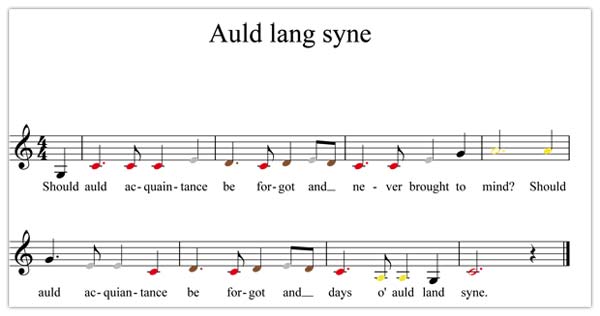
It’s always really interesting to see how people are trying to make music inclusive and readily available for everyone. This is why we’re really interested in a notation system called “Figure Notes” which we were introduced to when attending a BBC Ten Pieces event. Musical notation can look really daunting on the page, especially if you are just beginning to learn how to read it. “Figure notes” is a notation system based on shapes and colours. Basically you play what you see! This is a system that works very well for children with special needs or disabilities. It is used a lot by Drake Music Scotland, a charity that creates music opportunities for children and adults with learning difficulties.
There is a different colour for every note within an octave (a stretch of 8 notes). For example if we start on the note C, C would be red, D is brown, E is then white etc. It works mainly for piano because coloured stickers can be put on the notes. With each note having a colour, each register also has a shape. So the middle octave on the piano is circles and then the register below is squares. For example, we know that C is red, so if it was a red circle we would play middle C, and if it was a red square we’d play the C an octave below. The shapes then change size to determine how long you would play each note and therefore you’d start to read the rhythms too.
This all works for the natural notes but obviously in music we have sharps and flats too. A sharp (#) next to a note means we go a semitone (half a tone) higher than the note and a flat (b) next to it means we go a semitone lower. In this system of notation, they simply use arrows to point in the direction needed to go. So if we were looking at a brown circle (a D) that had an arrow pointing to the right, or higher up the piano, that would mean you play a D# because the symbol tells us to go higher. Likewise, if you see a brown circle with an arrow pointing to the left, or lower down the piano, that would mean you play a Db.
When learning a system of notation like this, it’s really important that the student can progress to reading traditional notation when they are ready. To bridge this gap, “Figure Notes” uses coloured notes, which starts to look like a musical stave but the notes are coloured in.


